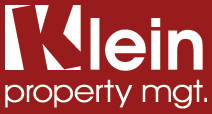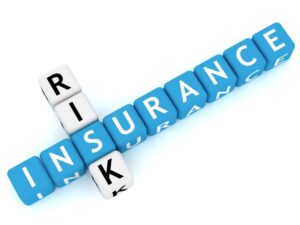Spring cleaning isn’t just for unit owners. As we move out of the winter months, now is a great time to make sure the community is “spic and span”.
Take a Walk. March is a great time to schedule landscape walks and maintenance walks with your vendors. Look at what kind of landscape needs you might have for the upcoming season, concrete, asphalt, things that would need attention. Those are very commonly scheduled, if you can schedule your landscape walk with your vendor, they can start to prepare your quotes for you moving into spring. For asphalt and concrete, any areas that the association are responsible for should be reviewed because those areas tend to sustain some damage over the winter. If the association is responsible for the roads, they may need maintenance after the winter months because salting and plowing can cause potholes. You may have common parking areas or parking lots. Entry ways, stoops, sidewalks, they should all be looked at if they’re the association’s responsibility. For landscaping, be on the lookout for anything that may have been damaged during the snowy season, from turf to dead plants that need replacing, to broken tree limbs.
Clean Out Those Gutters. Cleaning old leaves from gutters, downspouts, and catch basins should be done once the snow melts.
Dive into Pool Maintenance. Unless your community’s pool is heated, it’s likely been out of use during the winter season. Check the pipes and waterlines to make sure there are no leaks and if the deck needs to be sealed and pressure cleaned, now would be a good time to take care of that.
Do a pressure test to ensure that there are no underground leaks that are requiring you to refill the pool more often than would be typically necessary. Now’s also a good time to reseal any caulking, to check for loose tiles, and to take a good look at the pool filters and the pump room.
Get Your Owners On Board. Speaking of inspiring your owners to do a little spring cleaning of their own, Spring is a great time to send a newsletter out to your community reminding them to clean up any compliance issues that have piled up over the winter season. Prepare a newsletter and give homeowners a general reminder of some common issues. Tell them they have a certain time frame to clean this stuff up whether it’s cluttered balconies, cleaning up pet waste that had not been picked up over the winter, things of that nature that tend to go to the wayside in the winter months, and just give owners a heads up that these things are going to be looked at, so now is the time to really focus on that and clean that up so we can avoid any issues. Generally, you’ll notice these issues when you’re doing the maintenance walks mentioned above.
PLANNING A SUCCESSFUL CLEANUP IN YOUR NEIGHBORHOOD
- Organizing a neighborhood cleanup is a great opportunity to get to know your neighbors and beautify the community at the same time.
- As you think about recruiting fellow volunteers for your event, remember that you can always get fliers and newsletters that advertise your cleanup.
- First, be clear on the objectives for your cleanup so you can make the proper arrangements. There are different kinds of cleanups you can consider doing at various times during the year that require different materials, different promotions, and even different kinds of volunteers. Be clear about what your cleanup objective is, who you want or need to participate and how you will dispose of the litter, junk, hazardous materials or recyclables collected.
DUMPSTER SUPPLIED NEIGHBORHOOD CLEANUPS
If you are planning an opportunity for residents to dispose of household or backyard junk and clutter you will need to arrange a dumpster for your event, preferably a large container called a “roll-off dumpster.”
- One option is to coordinate your cleanup day with a dumpster if your town doesn’t offer bulk pickups.
- If you want to arrange a dumpster cleanup accessible to your neighborhood residents only, you need to work with a local waste hauler.
LITTER PICKUP EVENTS IN NEIGHBORHOODS/ROADWAYS/NATURE
- If you are doing a litter pickup event adjacent to a roadway, in a common area, or if you are doing a riverside, stream, hiking trail/wilderness area clean up you will need trash bags, gloves and perhaps safety vests. You will need to arrange collection locations for filled litter bags and bulky items and a way to have these items picked up or dropped off.
SOLUTIONS FOR HOUSEHOLD HAZARDOUS WASTES AND CONSUMER ELECTRONICS
- Products like paints, half full bottles of bleach, oil etc. that cannot be put in the dumpster and should not be collected on your cleanup day.
- Consumer electronics (like old TVs, computer parts, refrigerators, air conditioners, etc.) need to be separated on your cleanup day so that they can be treated separately at the Landfill. You will need to secure a location to gather consumer electronics for transport to the Landfill.
- Many neighborhoods find local volunteers with pickup trucks who are willing to bring these items to the Landfill site. Encourage your neighbors to transport household hazardous waste and consumer electronics to the Landfill.
- If your community can coordinate with the County/Town Dumpster Day events that are scheduled for your area with free County supplied dumpsters provided by the County, you will have no dumpster or disposal costs. To hold a dumpster cleanup confined only to your neighborhood or natural resource area, follow these tips; contact multiple garbage companies to get the best price for a cleanup day roll-off container. Also remember when negotiating for dumpsters that 1-3 roll off dumpsters may be needed for an all-day event depending on the area or number of homes in your community.
Location and Timing for Your Cleanup Event
- Locate a site (a common area, parking lot, or other large paved area) large enough to accommodate roll-off containers and traffic flow.
- Arrange to complete the event (both item drop offs and the removal of the dumpster) in the same day. Roll-off dumpsters left in your community unattended overnight become may attract nuisances and dumpers who will dispose of items without oversight.
- Remember also to have appropriate signage directing traffic in and out of the location, and make sure any temporary signs are removed after the event.
Volunteers
Tasks you can assign volunteers to work on include:
- Supervising to see that items deposited in the roll-off containers are appropriate
- Supervising traffic control during the event, especially when roll-off containers are delivered and removed
- Assisting participants to unload their vehicles when necessary
- Coordinating a “swap and drop” (should you choose to offer one), including monitoring items to ensure they are of suitable quality for exchange or reuse, and coordinating a charity organization to pick up the unwanted items at the end of the event
- Supervising cleanup of the location after the event. Remember to leave it cleaner than you found it.
If you have any questions on how you can plan a Spring cleanup in your community, feel free to call Klein Property Management at (732) 446-0611 or visit our website at www.kleinpropertymanagement.com.




